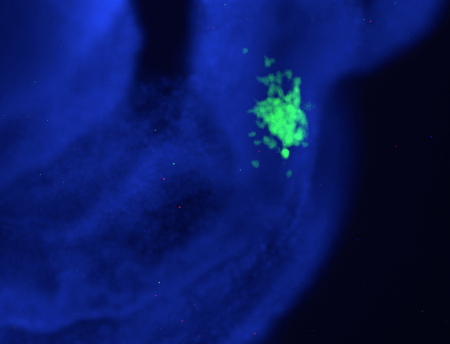October 18, 2015 – Earlier this year I read about a new pluripotent stem cell discovered by a developmental biologist at the Salk Institute in La Jolla, California. The cell type has been given the name region-selective pluripotent stem cells (rsPSCs).
Getting human pluripotent stem cells to grow in a host animal has always been difficult. But human rsPSCs seem to thrive when implanted into mice embryos. The potential to grow human organs in host animals is described by the discoverers to be not unrealistic.
Pluripotent stem cells have the ability to differentiate into any cell type in our bodies. But human stem cells when introduced into a host third party do not produce reliable regenerative organ results. rsPSCs, however, display spatial recognition, developing an identity linked to their location in the host.
How did scientists at the Salk Instituted discover rsPSCs? Using chemical signals to influence conventional pluripotent cells, the end results were cells that when inserted into a specific location in a mouse embryo developed tissues consistent with that location. Nerve cells grew where host nerve cells were forming. Stomach lining cells developed in proximity to the host’s developing stomach cells.
The researchers are convinced in theory that rsPSCs can mature into any functional tissue. But others believe that the discovery of rsPSCs suggests that there may be many other pluripotent stem cell types yet to be identified.
An image of the new stem cell discovery, courtesy of the Salk Institute, can be seen in the picture below.












